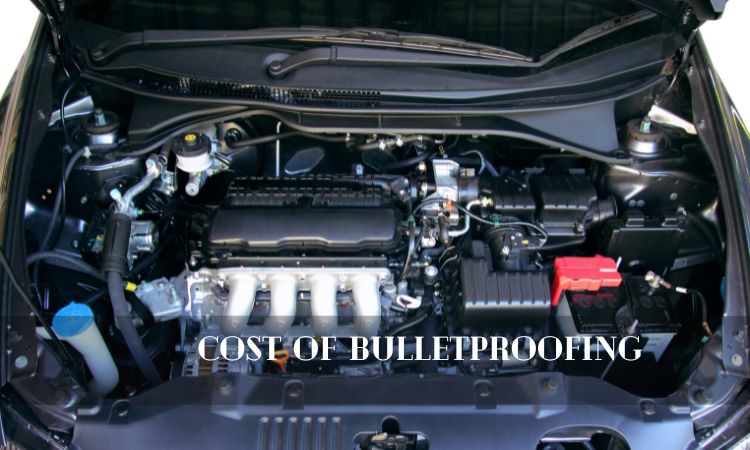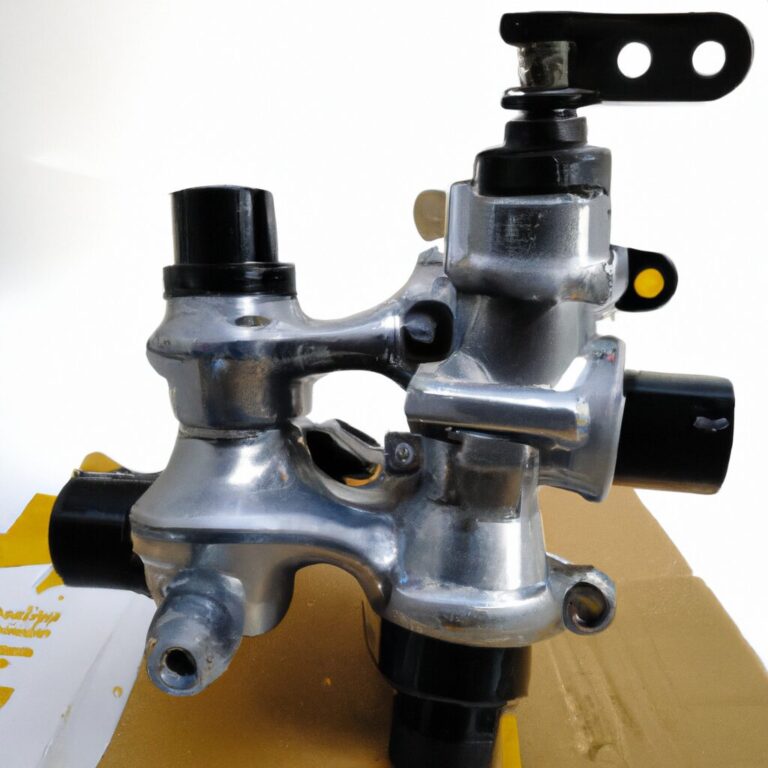How to Fix a Squeaky Brake Pedal
To fix a squeaky brake pedal, lubricate the pivot points or replace worn-out brake pedal bushings. Squeaky brake pedals are often caused by friction in the pivot points or worn-out bushings.
A squeaky brake pedal can be quite annoying and may indicate a potential issue with your vehicle’s braking system. Addressing this problem promptly is crucial to ensure the safety and performance of your vehicle. We will discuss some common causes of a squeaky brake pedal and provide step-by-step instructions on how to fix it.
By following these simple tips, you can eliminate the annoying noise and ensure that your brakes are functioning properly. Let’s dive in and learn how to fix a squeaky brake pedal effectively.
Identifying The Issue
If your brake pedal is emitting a squeaking sound, it may be caused by multiple factors. To identify the issue, start by checking the brake pedal assembly, lubricating moving parts, and inspecting the brake system for any signs of wear or damage.
This will help pinpoint and resolve the source of the squeak.
Listening For The Squeak
When you press the brake pedal and hear an annoying squeak, it’s crucial to identify the source of the noise to fix it effectively. Listening for the squeak is the first step in diagnosing the issue. Pay close attention to the sound and try to pinpoint when and where it occurs. Is it a high-pitched screech or a low groaning noise?
Start by:
- Driving the car in a quiet area
- Rolling down the windows
- Removing any distractions, such as the radio or HVAC fan
| Important: | Remember to ensure your safety while driving and perform this test in a secure environment. |
Once you’re ready, gently press the brake pedal and listen for any squeaks. Take note of when the noise occurs. Does it happen when you start driving or only after the brakes have been used multiple times? This information will help you identify the possible causes of the squeak.
Checking For Loose Components
If listening carefully didn’t provide any definitive answers, the next step is to check for loose components. Loose parts in the brake system can contribute to squeaky brakes. To check for loose components:
- Locate the brake pedal
- Visually inspect the area around it
- Check for any loose bolts or screws
If you notice any loose components, tighten them using the appropriate tools. It’s important to handle this task with caution to avoid causing further damage. As a general rule, only tighten components that you can easily access and have the necessary skills to handle. For complex issues, it’s best to consult a professional mechanic.
By identifying the issue through careful listening and checking for loose components, you are on your way to fixing that annoying squeaky brake pedal. Once you know the cause, you can apply the appropriate solution confidently.

Credit: www.reddit.com
Basic Maintenance
Ensuring proper maintenance is crucial to addressing a squeaky brake pedal. Here are some simple steps you can follow:
Lubricating The Pedal Mechanism
Lubrication is essential to reduce friction in the brake pedal mechanism.
- Use a high-quality silicone-based lubricant.
- Apply the lubricant to the pivot points and moving parts of the brake pedal.
- Regular lubrication will help keep the pedal operating smoothly.
Tightening Or Replacing Components
Ensuring that all components are tight and secure can prevent squeaks in the brake pedal.
- Check for loose bolts or screws that may be causing the squeaking.
- If tightening does not resolve the issue, consider replacing worn or damaged components.
- Regularly inspecting and maintaining these components is key to a quiet brake pedal.
Advanced Solutions
For more complex brake pedal squeaking issues, you may need to explore advanced solutions.
Inspecting The Brake System
To further troubleshoot the squeaky brake pedal, inspect the brake system components for signs of wear or damage.
- Check the brake pads for excessive wear.
- Examine the brake fluid levels for any possible leaks.
- Ensure the brake calipers are functioning properly.
Seeking Professional Assistance
If the squeaky brake pedal persists, seeking professional assistance from a qualified mechanic is recommended.
- A professional can conduct a thorough inspection of the brake system.
- They can determine the root cause of the squeaking and provide a solution.
- Professional expertise ensures the safety and optimal performance of the brakes.

Credit: www.mcdonaldvw.com
Preventive Steps
Regular inspection and lubrication, along with replacing worn parts, are essential preventive steps to fix a squeaky brake pedal. By taking these measures, you can ensure the smooth operation of your brakes and prevent any potential issues that may arise. Let’s explore these preventive steps in detail.
Regular Inspection And Lubrication
Regularly inspecting and lubricating your brake system components is crucial to maintaining a squeak-free brake pedal. Follow these steps:
- First, visually inspect the brake pedal assembly for any visible signs of wear or damage. Look for loose or misaligned parts, such as the brake pedal arm or pedal bushings.
- If you notice any abnormalities, it’s essential to address them promptly. Tighten any loose parts or replace damaged components to ensure proper functioning of the brake pedal.
- Next, lubricate the pedal pivot points and the brake pedal lever. Use a high-quality silicone-based lubricant to prevent squeaks and ensure smooth movement. Apply the lubricant sparingly as excessive lubrication can attract dirt and debris.
- Additionally, check the brake booster vacuum hose and connections for any leaks or damage. A leaky hose can cause a reduction in brake boost pressure, affecting the pedal feel and potentially leading to squeaking.
- Finally, test the brake pedal after lubrication to ensure it moves smoothly and without any squeaks. If you still experience squeaking, move on to the next preventive step.
Replacing Worn Parts
If regular inspection and lubrication did not resolve the squeaky brake pedal, it may be necessary to replace worn parts. Follow these steps:
- Start by identifying the specific component or components causing the squeaking. Typically, the squeak originates from worn brake pedal bushings or other mechanical parts.
- Refer to your vehicle’s service manual or consult a professional mechanic to identify the correct replacement parts for your brake pedal assembly.
- Once you have the necessary replacement parts, start by disconnecting and removing the brake pedal assembly from the vehicle. Take note of the assembly process to ensure proper reinstallation.
- Replace the worn brake pedal bushings or other worn parts as per the manufacturer’s instructions. Ensure a secure and proper fit during the replacement process.
- After replacing the worn parts, reinstall the brake pedal assembly back into the vehicle using the same procedure followed during removal. Ensure all connections are tight and secure.
- Lastly, test the brake pedal’s functionality and check for any remaining squeaks. If the squeaking persists, it’s advisable to consult a professional mechanic for further inspection and repair.
By following these preventive steps, you can effectively fix a squeaky brake pedal and maintain optimal brake performance. Regular inspection and lubrication, along with timely replacement of worn parts, will ensure a quiet and responsive brake pedal for safe driving.
Final Testing
Driving Test
Take the vehicle for a brief drive to test the effectiveness of the solution. Apply the brakes gently to see if the squeaking noise has been eliminated. Monitor for any unusual sensations or sounds during the test drive.
Repeating Fixes If Necessary
If the squeaking persists after the initial attempt, it might be necessary to repeat the fixes. Review the steps taken and ensure each component has been properly addressed. Sometimes, a second application of lubrication or adjustment is needed for optimal results.
Credit: www.civicx.com
Frequently Asked Questions For How To Fix A Squeaky Brake Pedal
What Does It Mean When Your Brake Pedal Squeaks?
A squeaking brake pedal indicates a potential issue with your brakes. It could be due to worn brake pads, rotor damage, or lack of lubrication. Get your brakes inspected by a professional to diagnose and fix the problem.
How Do I Lubricate My Brake Pedal?
To lubricate your brake pedal, apply silicone lubricant to the pivot points and moving parts. Use a cloth to wipe off any excess lubricant for smooth pedal operation.
Can I Spray Wd40 On My Brakes To Stop Squeaking?
No, do not spray WD40 on your brakes to stop squeaking. It can cause decreased braking performance.
How Do You Fix A Squeaky Accelerator Pedal?
To fix a squeaky accelerator pedal, lubricate the pivot points and hinges with a silicone or graphite spray. Apply the spray directly onto the affected areas and work the pedal back and forth to distribute the lubricant evenly. This should resolve the squeaking issue.
Why Is My Brake Pedal Squeaking?
Brake pedal squeaking may be caused by worn out brake pads or lack of lubrication.
How Can I Fix A Squeaky Brake Pedal?
You can fix a squeaky brake pedal by lubricating the pivot points and checking for worn brake pads.
Is A Squeaky Brake Pedal Dangerous?
A squeaky brake pedal can be a warning sign of potential brake issues, so it should be addressed promptly.
Conclusion
To conclude, addressing a squeaky brake pedal is crucial for maintaining the safety and reliability of your vehicle. By following the simple steps outlined in this guide, you can easily fix the issue and restore the functionality of your brakes.
Remember to regularly inspect and maintain your braking system to prevent future problems. Drive safely and enjoy a smoother ride!



